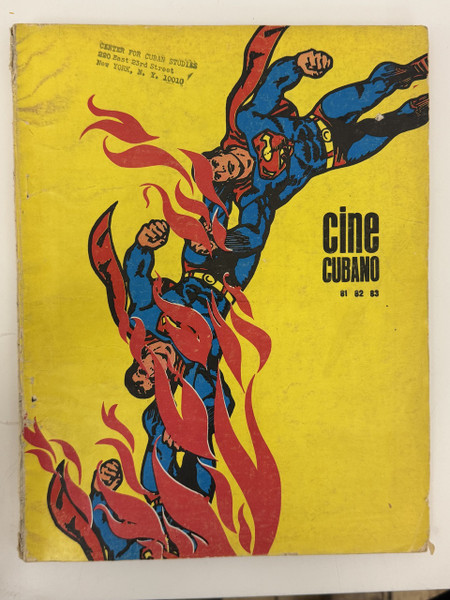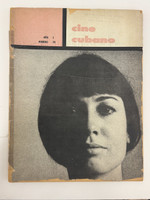- Travel
-
Exhibits
- La Portada Cubana
- Immortal Cuba: Artists Take on Their Heroes
- Seattle Poster Exhibit
- Sandra Dooley & Alejandrina Cué
- The Art of Wayacón
- Cuban Folk Art
- Cuba In Black And White
- 25 Years of Cuban Art Space
- Summer Folk Art Expo
- ¡SPRING AWAKENING FROM CUBA!
- Celebrating The Art Of Cuban Women
- Celebrating Paper, Affordable Art from Cuba
- Art of the Revolution
- Outsider Art
- Lost and Found
- En la lucha: Celebrating Cuban Women and Their Art
- Cuban Art Stash
- 100 Fires: 5 Cienfuegos Artists' Work on Paper
- Waya + Monte! Magic Realism in Cienfuegos
- Viva Cuba Viva! Poster Show
- Cultivando Sueños
- Black Lives Matter in Cuba Jan 9-March 27
- Leandro Soto: Crónicas visuales
- Cuban Canvas
-
Archive
- Global Reflection 2018: Spirit and Community
- Exhibit in the cloud: Contemporary Works on Paper
- MADE IN CUBA! MINNEAPOLIS EXHIBIT
- Cuban Posters and Photography from CCS collection
- AUTUMN SALE! Sept/Oct 2017
- SPRING ARTS AND CRAFT SALE
- Vuelo Directo/Non Stop: Alberto & Alejandro Lescay
- The Many Faces of Fidel
- Somos
- Made in Cuba!
- The US empire in Cuban graphics
- Made in Cuba/Seattle exhibit
- Entre Nos
- Looking Back
- Cuban Art Space
- Membership/Donate
- About Us
- Cuba News
-
The cover of "Cine Cubano" issues 61-63 features Reboiro's dynamic design showing heroic revolutionary figures rendered in bold blue and red against a vibrant yellow background, with dramatic flames and flowing banners creating a sense of movement and struggle. The comic book-inspired aesthetic reflects the magazine's commitment to analyzing popular visual culture while celebrating revolutionary cinema. The powerful imagery evokes both socialist realist heroism and contemporary graphic design, positioning Cuban cinema within broader cultural and political contexts. This twentieth anniversary issue demonstrates the magazine's evolution from a specialized film publication into a broader cultural review examining visual media's ideological dimensions.
Published by Cuba's Instituto Cubano del Arte e Industria Cinematográficos (ICAIC), this special twentieth anniversary issue spans 1981-1983 and reflects Cuban cinema's maturation during a period of international cultural exchange. Under director Alfredo Guevara's guidance, the magazine expanded its scope to include ideological critique of comics in Latin America, pedagogical reactions to Disney, analysis of underdevelopment themes in film, and examinations of animated cinema's portrayal of indigenous, Black, and Latin American subjects. The issue includes substantial coverage of Tarzan films, Popeye analysis, North American penetration in children's entertainment, and responses to Chilean cinema publication "Primer Plano."
This comprehensive issue demonstrates Cuban cultural criticism's sophisticated approach to visual media analysis during the 1980s. Articles examine "Solaris" within science fiction cinema contexts, lunar voyage films, and provide detailed filmographies for major directors. The editorial offices at Calle 23 no. 1155, Habana, Cuba, and subscription information ($0.25 per issue in Cuba, $0.75 annual in Cuba, $3.00 international) reflect the magazine's commitment to accessibility while maintaining high production standards. The collaboration with layout designer Holbein and cover artist Reboiro exemplifies Cuban cultural institutions' integration of visual and textual criticism in service of revolutionary cultural development.
-
-
Discover More at the Center for Cuban Studies




![Instituto Cubano del Arte e Industria Cinematográficos / ICAIC (director: Alfredo Guevara), "Cine Cubano" issue 48 - "Cine del Tercer Mundo," [1970s]. Offset print, magazine.](https://cdn10.bigcommerce.com/s-ufzvo/products/5901/images/6486/IMG_8812__28936.1761537538.200.200.jpg?c=2)
![Instituto Cubano del Arte e Industria Cinematográficos / ICAIC (layout: Holbein, cover designer: Reboiro (Antonio Fernández Reboiro), director: Alfredo Guevara), "Cine Cubano" issues 76/77, [1976-1977]. Offset print, magazine.](https://cdn10.bigcommerce.com/s-ufzvo/products/5903/images/6490/IMG_8817__13591.1761537538.200.200.jpg?c=2)
![Instituto Cubano del Arte e Industria Cinematográficos / ICAIC (layout: Holbein, cover design: Reboiro (Antonio Fernández Reboiro), director: Alfredo Guevara), "Cine Cubano" issues 78/79/80, [1978-1980]. Offset print, magazine.](https://cdn10.bigcommerce.com/s-ufzvo/products/5904/images/6491/IMG_8819__36889.1761600195.200.200.jpg?c=2)
![Instituto Cubano del Arte e Industria Cinematográficos / ICAIC (layout: Holbein, cover design: Tony Fernández Reboiro, director: Alfredo Guevara), "Cine Cubano" issues 54-55, [1969]. Offset print, magazine.](https://cdn10.bigcommerce.com/s-ufzvo/products/5905/images/6493/IMG_8821__07256.1761600194.200.200.jpg?c=2)